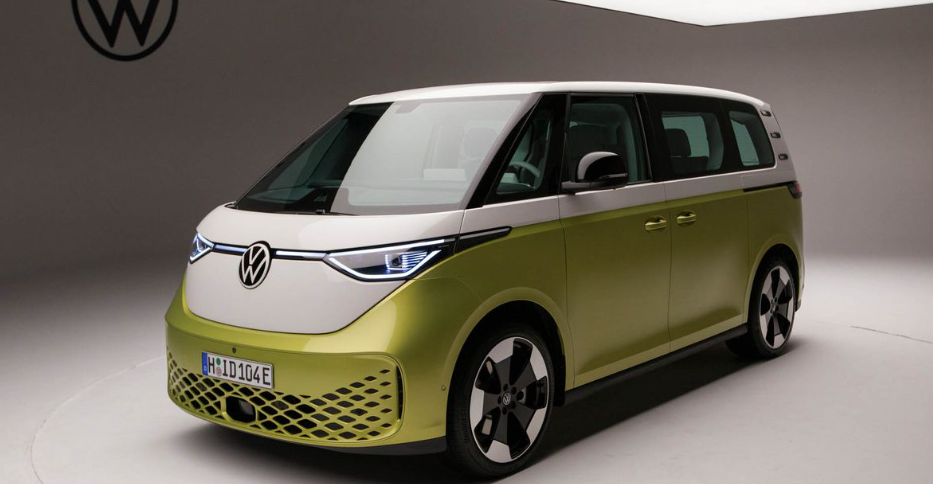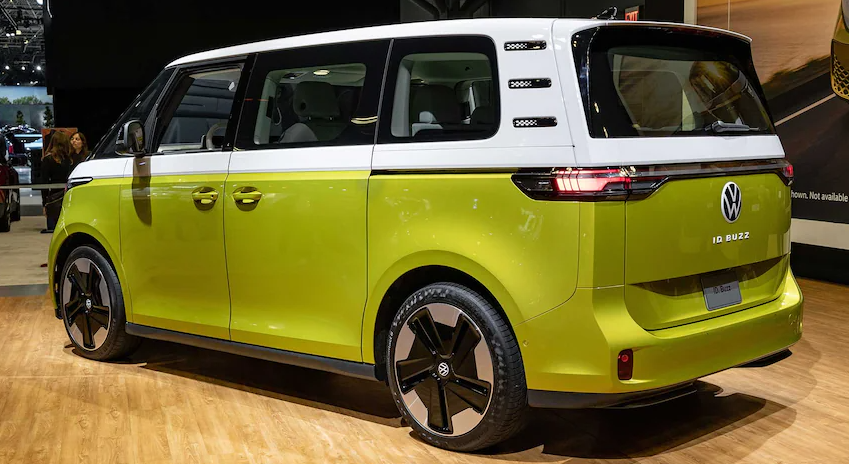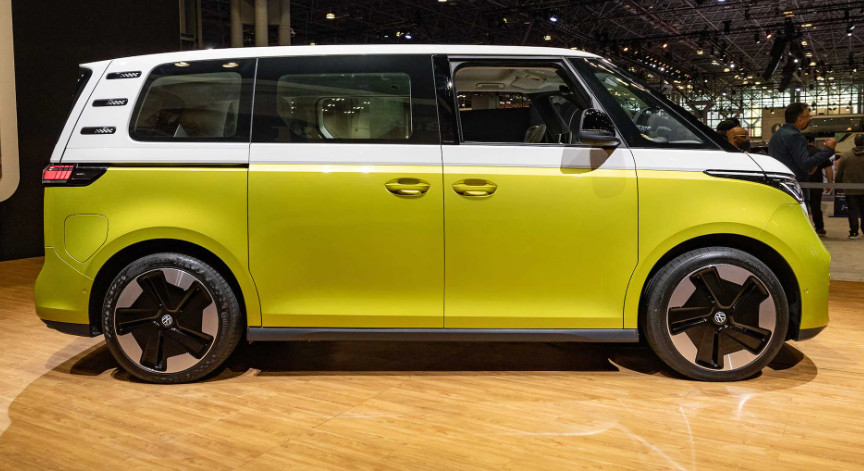2024 Volkswagen ID.Buzz Microbus – Automakers often invite us to test-drive prototypes of their designs for the future however, we’re not ready to accept such invitations. A review of an unfinished car is, necessarily, unfinished–especially as we are inevitably told that anything we don’t like is certain to be changed before the formal launch.

2024 Volkswagen ID.Buzz Microbus Review
It was inevitable that we’d reject this car regardless of the fact that it’s a prototype model that will not make it into our country for two years. There’s also the European version that’s different in comparison to that of the U.S. model. It’s because beneath the wrap-around cover, which is psychedelic, is the latest Volkswagen bus that has been awaited since the demise of the Vanagon in the year 1991.
Volkswagen gave a few clues about the possibility of returning the bus in the time the Microbus concept was unveiled at the 2001 Detroit Auto Show. But it was the ID. Buzz which was unveiled in Detroit in 2017 suggested the final version which is an electric microbus. It is built on the specific modular platform for electric automobiles (MEB) that is the basis for Volkswagen’s ID.4 as well as the Audi Q4 e-Tron. Volkswagen ID.4 along with Audi Q4 e-Tron.
Changes
The model made in Europe was one-third the size of the prototype that will make its way to the States. It was more like a commercial vehicle rather than a people-hauler, with a bulkhead in the seating area which totally divides the cargo space. All versions of the models we have will have a passenger-oriented design. It also came with the smaller 117.6-inch wheelbase. This model is available within Europe and the plan is to bring only the version with a larger wheelbase to America. The U.S. version will also include a larger battery than is the version that was tested in the prototype’s 77.0-kWh battery.
You can be sure that the thrill remains a valid motive. The trip started at Volkswagen Group’s U.K. headquarters in Milton Keynes which is the name given to the English town built in the 1970s on the site of green fields. The town is an urban grid that was developed in the 1970s by an urban designer with a base in Berkeley. It features roundabouts at every intersection (a very English characteristic). It’s a fantastic place to study understeer, or in this instance, ID. Buzz’s remarkable in its resistance.
Engine
Its ID. Buzz’s MEB architecture means that most of its features are well-known however, the shape and internal dimensions demonstrate the versatility of an architectural design even when it’s no longer required to house a huge upright engine. The thickness that the battery packs are obviously one of the factors that determine the size that the ground. But, it’s also a lot of space and can convert a significant part of the 185.5-inch width into indoor space. We’ve been told it’s possible that U.S.-spec models will have three rows of seats.
The initial prototype used what’s thought as the engine used in basic vehicles, consisting of one motor powered by electricity that is driven by both rear wheels. Vanagon will be pleased to see that its successor uses the same wheels. Like its predecessor, the ID.4 the engine produces the equivalent of 229 pounds of torque. Volkswagen engineers have claimed that an all-wheel-drive model with a different motor that powers the front axle may be on the market. Beyond the basic dimensions, just certain details are known, however, we’ve heard that all models that makeup ID. Buzz will have an additional speed limitation of up to 90 miles per hour. The model with a shorter wheelbase is extremely agile and has an approximate turning radius of 35 feet.
Test Driving
Despite its minimal engine specs However the ID. Buzz is more efficient and flexible than its predecessors which have air cooling. It can also accelerate quickly from the beginning with precise throttle inputs. It’s not rocketship-like, and it’s not unreasonable to expect the speed of 60 mph will take less than 9 minutes. The acceleration slows when speed increases and a test driving test at 90mph proved the fact that this car requires a long time to reach. At 75 mph, however, the ID. Buzz was totally content, something no one had ever talked about prior to this Vanagon or its predecessors.

While a tiny portion of ID. Buzz buyers are looking for high-performance sports cars, the car’s chassis functioned extremely well in tests. When it was pushed through the muddy, tight places and tight spaces, the car did not provide any clues how the rear motor was rear-drive setup and the stability control was working in a subtle way to restore the lost grip. The front end wasn’t fast enough to lose control but was able to stay in the same direction, even with the winter-ready tires VW used for our test.
The quiet operation of the powertrain wasn’t a surprise, but the constant silence as speed increased was quite a shock. Panel vans aren’t exactly the most silent, considering their size and the absence of noise insulation. However, even with their cargo configuration, the ID. Buzz didn’t sound like much, with just the sound of wind squeezing the peacefulness of the travel. The ride’s quality was amazing considering the commercial-grade underpinnings however there was a little floating on larger undulations which could be averted with the addition of the payload. The wheels on this prototype which measure 18 inches smaller in diameter than the wheels available, likely contributed to the high performance of the vehicle. Volkswagen says that sizes that go between 21 and 22 inches will be made available.
2024 Volkswagen ID.Buzz Microbus Feature
There’s nothing to say about the inside of the Buzz since the doors and the dashboard were mostly concealed. It seems that it has the exact user interface of the ID.4 includes the touchscreen on the dashboard and smaller screens at the rear of the wheel. It also includes the exact and delicate HVAC controls located in a manner that they are able to accidentally activate while you are operating the display. There are however many intelligent functions that function in a quiet manner. The initial thought was to be a faulty regenerative brake, but it was discovered to be the ID. Buzz shifting the speed to adjust to accommodate forthcoming intersections or limits. The final car is compatible with new Plug & Charge technology, which lets cars connect directly to chargers, and eliminates the need to use cards or apps. We don’t have figures yet on the range, however, the design team says they’d be happy with a range of 250 miles in conformity with the European WLTP testing protocol, which is a range that the larger battery should be able to offer in accordance with the more stringent EPA standard. We haven’t been given the estimated speed of charging, but we’re confident that a quick DC charge is feasible (the ID.4 supports rates of up 250 Kilowatts).

The original Volkswagen bus’s hippie-inspired design has made the most recent version the ideal candidate for an electric motor. There’s no version that’s powered by combustion. VW attempted to electrify its initial model with a distinctive style in 1972. It included a Type 2 panel van with 21.6 kWh of lead-acid batteries. They covered the bulk of the cargo space and were powered by the power of 42 horsepower. It could achieve a top speed of 46 miles per hour. It was a tad slow even by the less-respected standards of the day. It wasn’t able to enter production, however the ID. Buzz certainly will. We’re eagerly awaiting our final version.